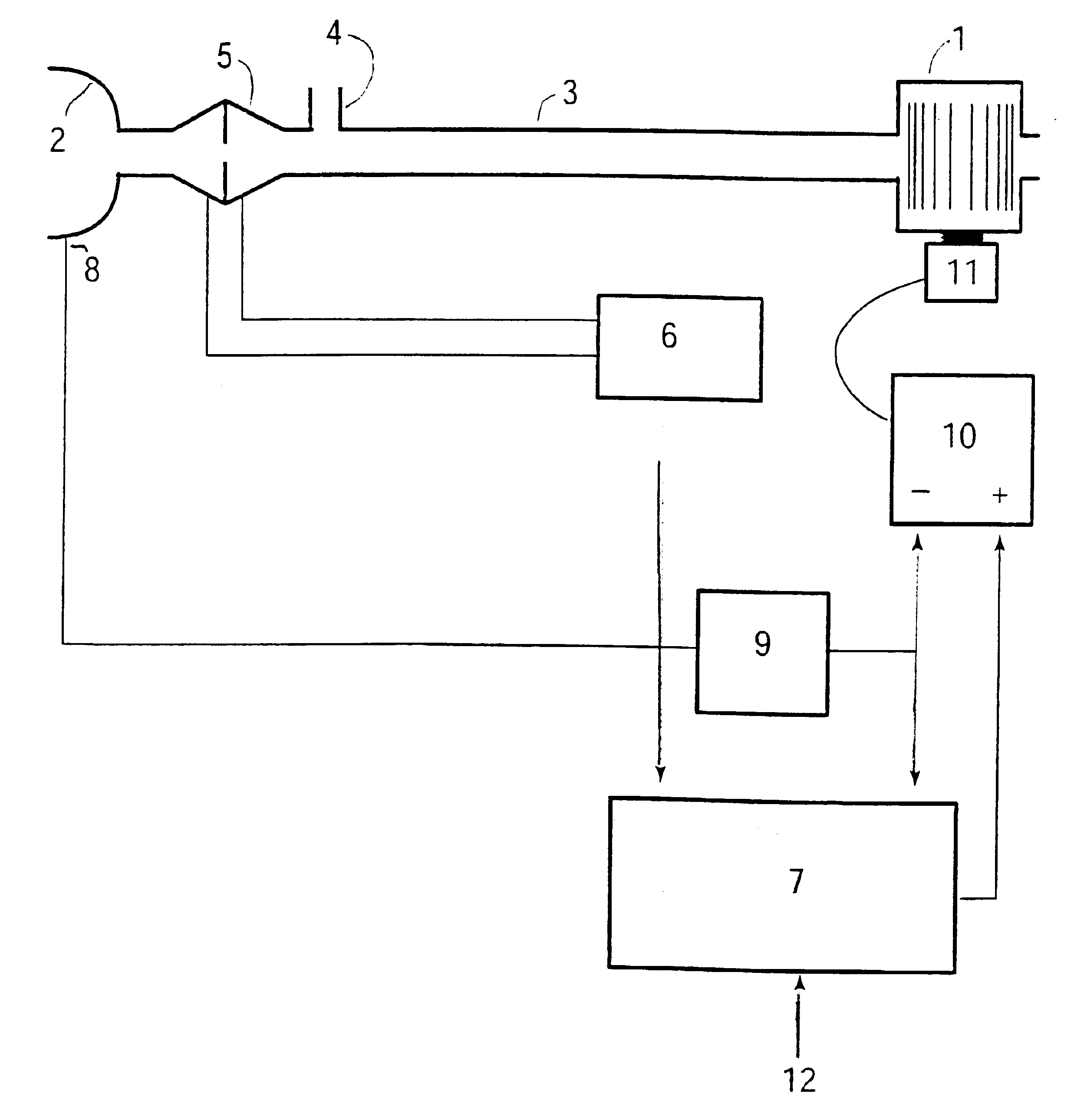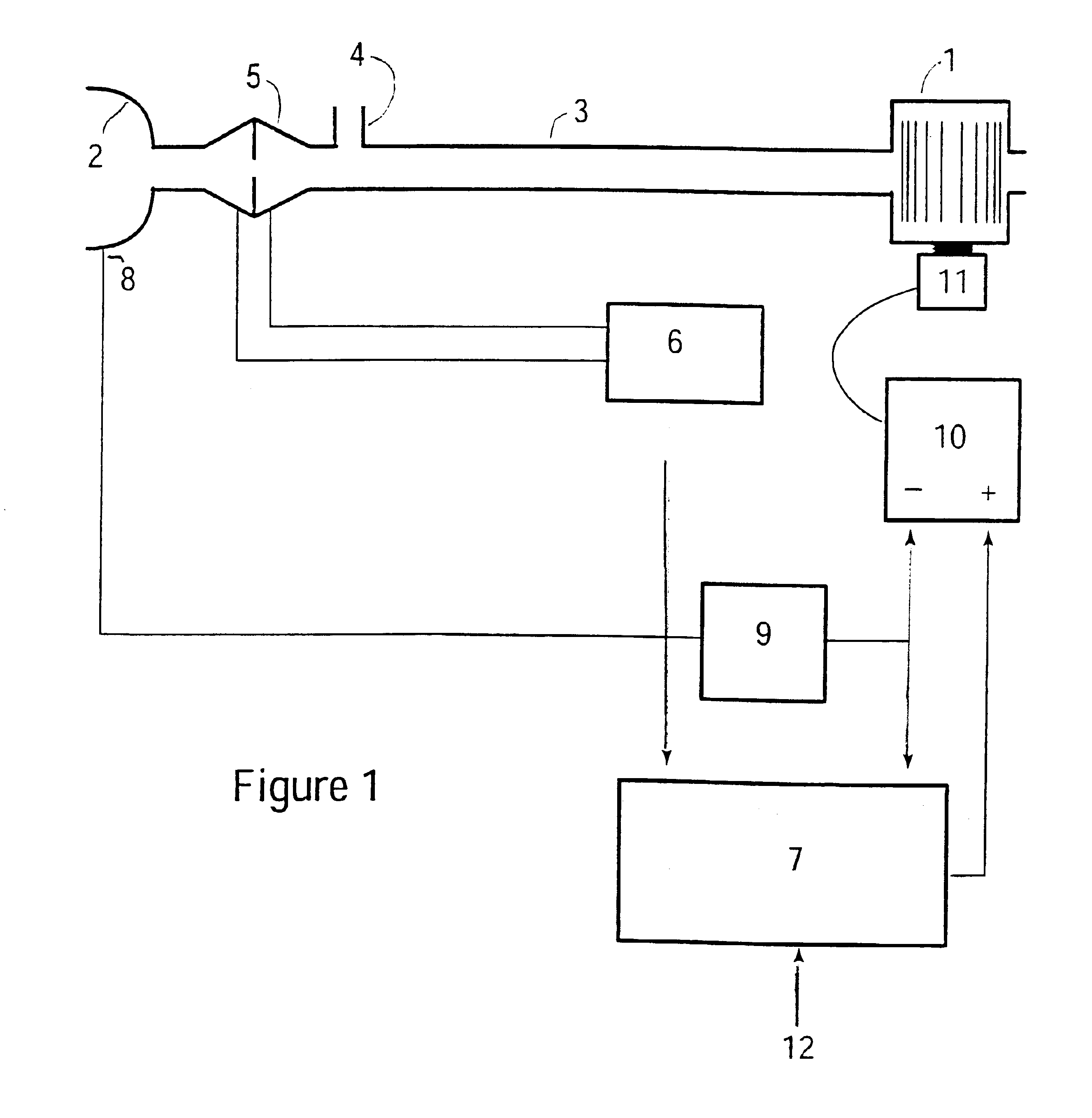Method and apparatus to counterbalance intrinsic positive end expiratory pressure
a technology of intrinsic positive end expiratory pressure and counterbalance, which is applied in the direction of valve details, valve arrangement, operating means/releasing devices of valves, etc., can solve the problems of excessive peeping, inability of the lungs to return to vsub>r /sub>, and inability to use excessively
- Summary
- Abstract
- Description
- Claims
- Application Information
AI Technical Summary
Benefits of technology
Problems solved by technology
Method used
Image
Examples
first embodiment
Two embodiments for deriving a measure of the degree of expiratory airflow limitation will now be considered. In the first embodiment, airway conductance during inspiration is compared with airway conductance during expiration, and a higher conductance during inspiration indicates expiratory airflow limitation. Airway conductance is calculated by superimposing on the instantaneous mask pressure a 4-Hz oscillation of amplitude 1 cmH2O, and measuring the component of the respiratory airflow signal at 4 Hz. The conductance may be calculated once for each half cycle of the 4-Hz oscillation. In order to identify inspiratory and expiratory halves of the respiratory cycle, the respiratory airflow is low-pass filtered to minimize the imposed 4-Hz oscillation, for example, by averaging measured respiratory airflow over a moving window of length 0.25 seconds. If the 4-Hz low-pass filtered flow is above a threshold such as 0.1 L / sec, it is taken to be the inspiratory half-cycle. Otherwise, it ...
second embodiment
In the second embodiment for deriving a measure of the degree of expiratory airflow limitation, the degree of expiratory flow limitation is calculated from the shape of the expiratory flow versus time curve. The expiratory portion of each breath is identified, for example, by taking expiration as the period where airflow is less than 0.1 L / sec. The mean expiratory airflow during the final 25% of expiratory duration is calculated, and divided by the peak expiratory airflow. For a subject without expiratory airflow limitation, this ratio will be close to zero, and less than a threshold such as 0.2, whereas for a subject with expiratory airflow limitation, it will be larger, for example, in the range 0.2 to 0.6, with higher values indicating more severe dynamic airway compression. Therefore, a second measure of the degree of expiratory airflow limitation is M2=(mean expiratory flow during last 25% of expiratory time) / (peak expiratory flow)−threshold, where the threshold is, for example...
PUM
 Login to View More
Login to View More Abstract
Description
Claims
Application Information
 Login to View More
Login to View More - R&D
- Intellectual Property
- Life Sciences
- Materials
- Tech Scout
- Unparalleled Data Quality
- Higher Quality Content
- 60% Fewer Hallucinations
Browse by: Latest US Patents, China's latest patents, Technical Efficacy Thesaurus, Application Domain, Technology Topic, Popular Technical Reports.
© 2025 PatSnap. All rights reserved.Legal|Privacy policy|Modern Slavery Act Transparency Statement|Sitemap|About US| Contact US: help@patsnap.com


